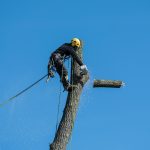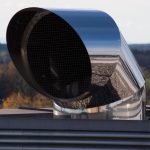2023 UK Drone Regulation Updates Impacting Photography
Understanding UK drone laws 2023 is crucial for anyone involved in drone photography. Significant changes have been introduced this year, affecting how drone operators must comply with drone regulations. One major update includes stricter rules on drone registration and pilot competency proof, making it essential to verify you meet new standards before flying.
New permissions specifically address drone photography activities. For example, capturing images in congested areas now requires additional clearance due to privacy and safety concerns. Restrictions have also expanded around certain airspaces—commercial and recreational pilots alike must be familiar with these no-fly zones to maintain legal compliance for drone photography.
Also read : Join the ranks: how uk residents can engage with policing initiatives in 2023
To avoid penalties under the updated drone regulations, operators should:
- Register their drone with the Civil Aviation Authority (CAA) as mandated.
- Complete comprehensive safety and knowledge tests.
- Obtain explicit permissions for activities involving photography over crowds or private property.
- Monitor location-based restrictions and follow up-to-date NOTAMs (Notices to Airmen).
In 2023, the emphasis on UK drone laws reflects growing concerns about privacy, security, and safety while flying. Remaining diligent about these changes ensures not only adherence to the law but also the sustained growth of responsible drone photography in the UK.
Topic to read : Comprehensive 2023 guide: navigating the new uk maternity and paternity leave regulations for employers
Practical Checklist for Drone Photography Compliance
Ensuring drone registration UK compliance is the first step toward legal drone operation. All drones weighing more than 250 grams must be registered with the Civil Aviation Authority (CAA). Alongside registration, obtaining a competent pilot certification—such as the Flyer ID—is mandatory for flying a drone legally. This demonstrates you understand drone regulations and safe operation practices.
Before each flight, verify that your planned location is a legal flight zone. The UK classifies certain areas—urban centers, near airports, and critical infrastructure—as no-fly or restricted zones. Consulting up-to-date maps and NOTAMs helps maintain legal compliance for drone photography and avoids fines or confiscations.
Photographic permits are often required for shooting in public spaces or over crowds. These photographic permits ensure privacy and safety laws are respected, crucially aligning with evolving UK drone laws 2023. Applying early for permissions reduces the risk of last-minute disruptions.
During aerial shoots, maintain visual line-of-sight, avoid flying over people, and adhere to altitude limits detailed in the updated drone regulations. After finishing your session, responsibly store or delete footage containing sensitive areas, respecting privacy rules.
A streamlined checklist for compliance includes:
- Registering your drone and obtaining pilot certification.
- Confirming your flight zone is legally permitted.
- Securing necessary photographic permits when applicable.
- Following safe operational practices to avoid penalties.
By following these steps, drone photographers can confidently navigate the changing regulatory landscape and focus on capturing stunning aerial imagery.
Mastering Advanced Drone Photography Techniques in 2023
Elevating your skills in advanced drone photography requires understanding the latest equipment features and flying techniques. In 2023, drones come equipped with improved sensors and stabilization, enabling crisper, more vibrant aerial imagery. Adjusting camera settings such as ISO, shutter speed, and aperture tailored to changing light conditions is essential for capturing professional-grade shots.
Creative composition plays a key role in producing captivating images. Employing dynamic angles, such as low-altitude flyovers or high-angle panoramas, adds depth and context. Cinematic techniques like smooth tracking shots or timed lapses enhance storytelling through aerial visuals.
Professional drone photographers often apply these methods in diverse fields. Real estate benefits from wide-angle views that showcase entire properties, while event coverage leverages dynamic shots to capture group activities. Landscape photography gains richness through thoughtful framing of natural features to evoke atmosphere.
To excel with professional drone shots, practice these tips:
- Use manual camera settings to control exposure precisely.
- Plan flights to align with golden hour lighting for warm, appealing tones.
- Incorporate movement patterns like orbits or elevation shifts to add drama.
- Utilize post-processing software to enhance color balance and sharpness.
Mastering such techniques not only improves image quality but also helps meet rising expectations under evolving UK drone laws 2023 and enhances your portfolio’s impact.
Navigating Privacy and Safety Concerns
Ensuring drone privacy UK compliance is a cornerstone of responsible drone photography. In 2023, privacy laws emphasize protecting individuals from unauthorized surveillance or data collection when flying over both public and private spaces. Operators must understand that capturing images or video without consent in sensitive areas may breach privacy rights and attract legal consequences.
To respect these boundaries, it is critical to avoid flying over private property without explicit permission. For public spaces, while permissions may be less restrictive, adhering to location-specific privacy ordinances remains necessary. Always assess whether your footage includes identifiable individuals or private activities and handle sensitive content with care to prevent any privacy infringements.
Safe drone operations also involve practices to reduce risks of accidents or interference with other airspace users. Awareness of no-fly zones—including airports, prisons, and government buildings—is mandatory. Ignoring these restrictions can result in severe penalties and jeopardize public safety. Applying geo-fencing technology on drones can help maintain compliance automatically by limiting flights near sensitive zones.
To further promote respectful airspace use, drone pilots should maintain a safe distance from crowds, wildlife, and critical infrastructure. This includes operating within visual line-of-sight and observing altitude limits outlined in updated drone regulations.
If an incident occurs, such as a privacy complaint or airspace violation, timely reporting to the Civil Aviation Authority (CAA) or relevant authorities is essential. Effective communication and cooperation facilitate dispute resolution and reinforce community trust.
By integrating privacy awareness, operational safety, and respect for airspace rights, drone photographers can ensure their work aligns with current UK standards and supports sustainable drone use.
Expert Resources and Training for Drone Photographers
Continuously advancing your skills through drone pilot courses is vital for mastering both the technical and legal aspects of drone photography in 2023. Accredited training programs cover essential topics such as the latest CAA guidelines, airspace classification, and emergency procedures. These courses emphasize not only flight proficiency but also compliance with updated drone regulations, ensuring operators understand their responsibilities.
Pursuing formal certification builds confidence and demonstrates commitment to ethical and safe flying practices. Many courses offer specialized modules in areas like commercial aerial photography or BVLOS (Beyond Visual Line of Sight) operations, helping pilots expand their professional capabilities. Some providers also include hands-on training with new drone models, enhancing familiarity with advanced features critical for producing top-quality images.
To remain current, staying connected with official sources like the Civil Aviation Authority updates is crucial. The CAA frequently publishes guidance on regulatory changes, safety notices, and procedural amendments aligned with UK drone laws 2023. Engaging with professional forums and drone photography communities further supports practical knowledge sharing and problem-solving among practitioners.
Investing time in ongoing education benefits drone photographers by:
- Ensuring continued legal compliance for drone photography.
- Enhancing operational safety and technical precision.
- Keeping pace with industry advancements and regulatory shifts.
By committing to regular training and utilizing authoritative resources, drone operators can confidently navigate the evolving landscape and maintain high standards in their craft.










